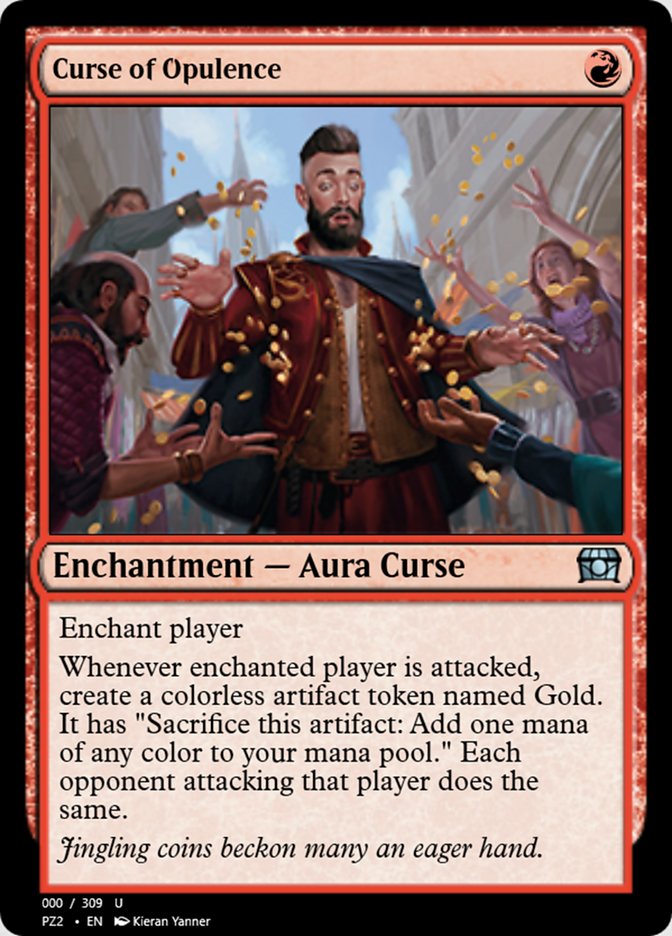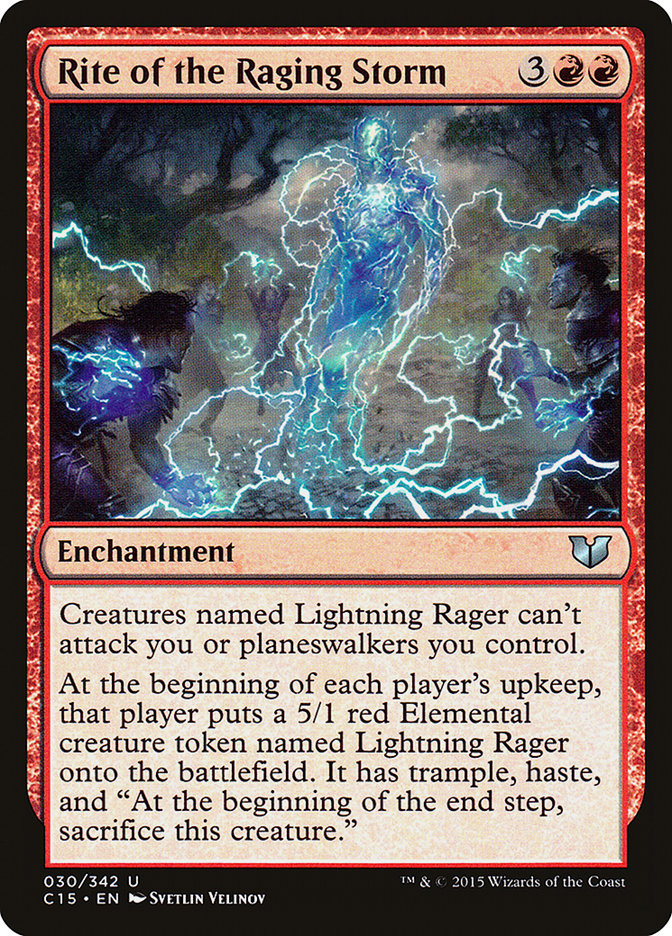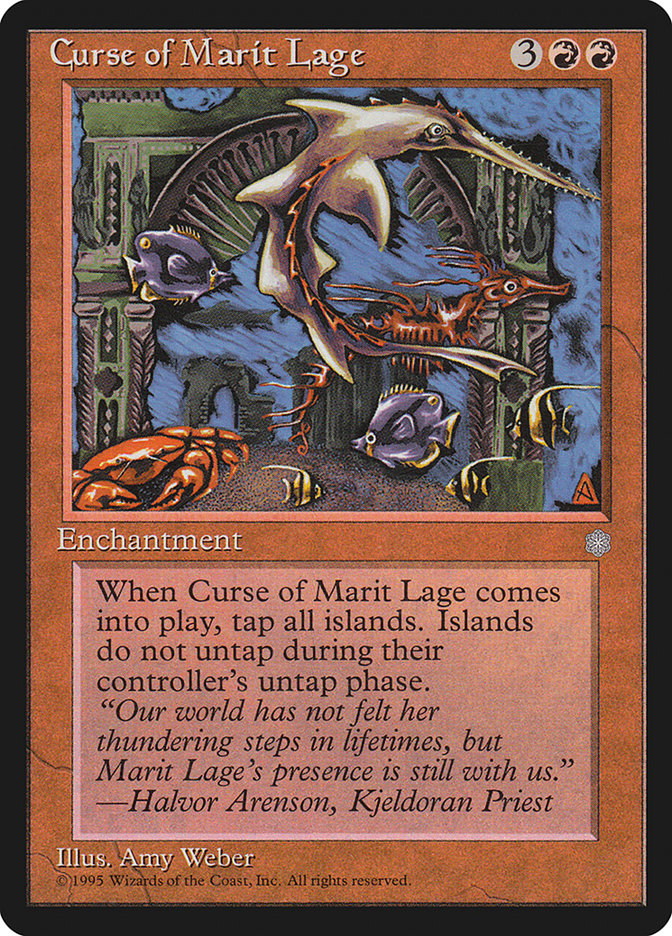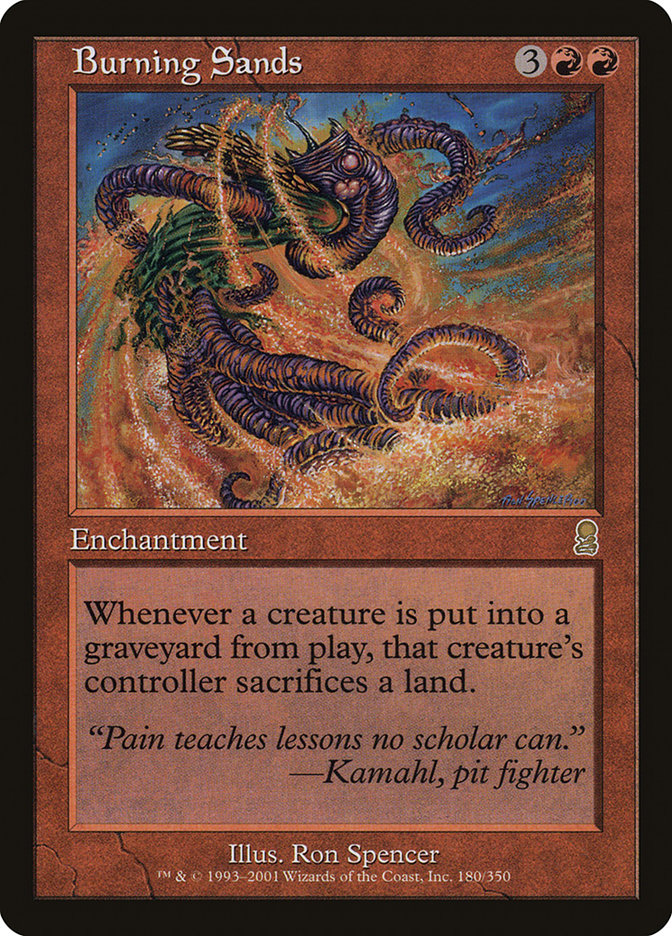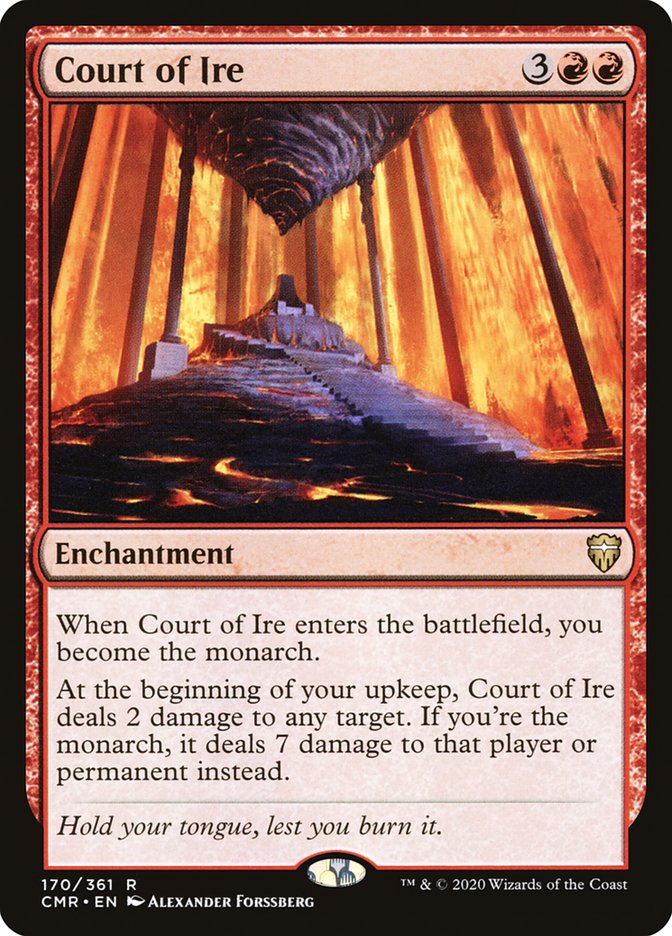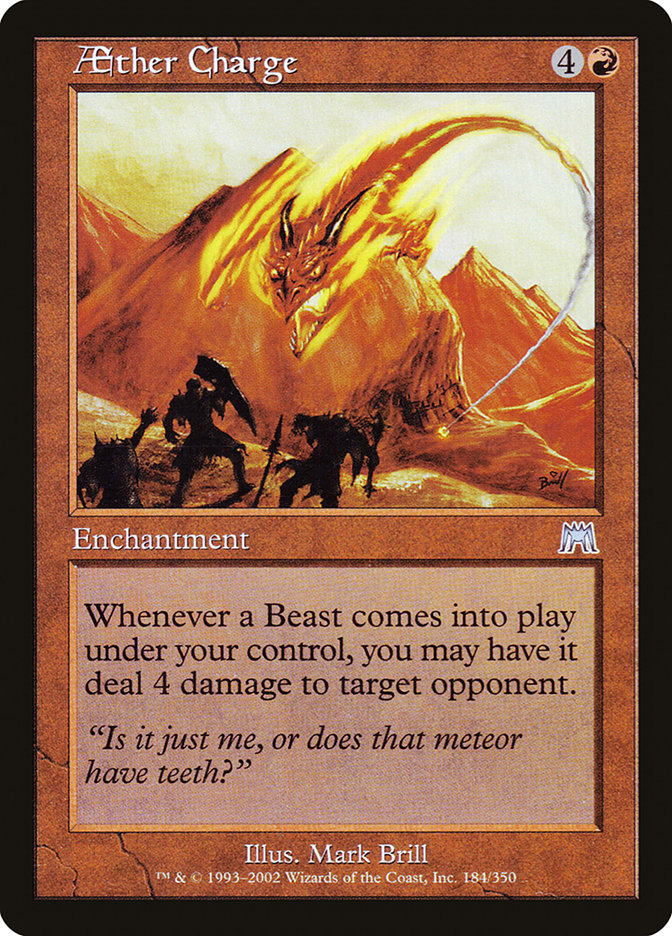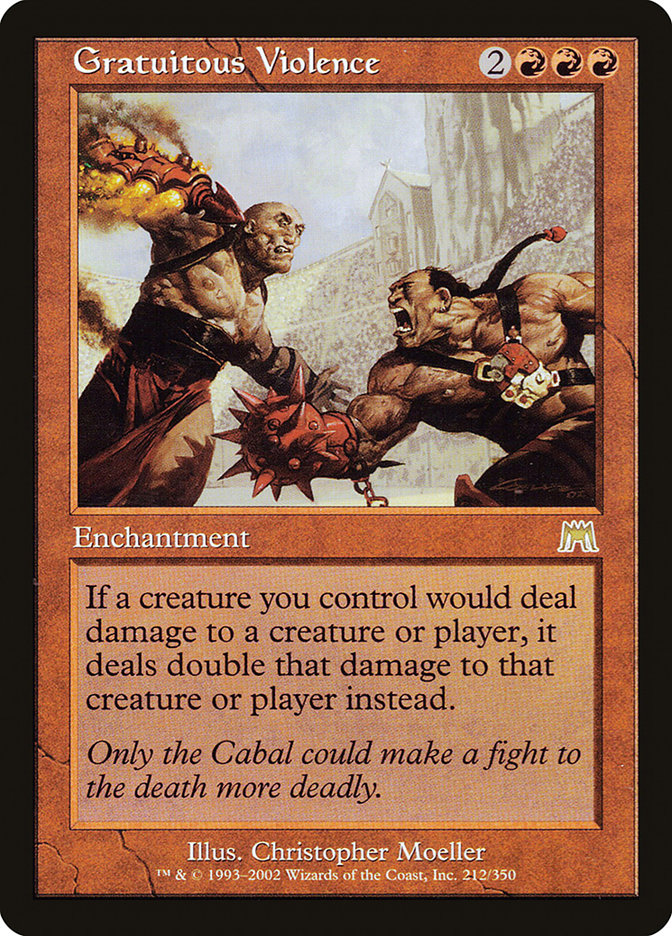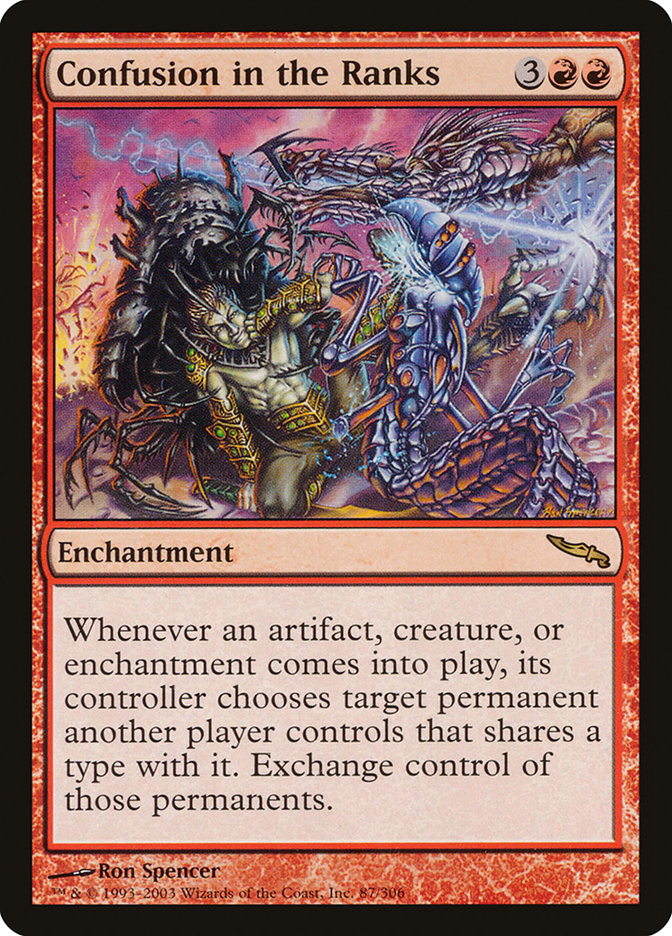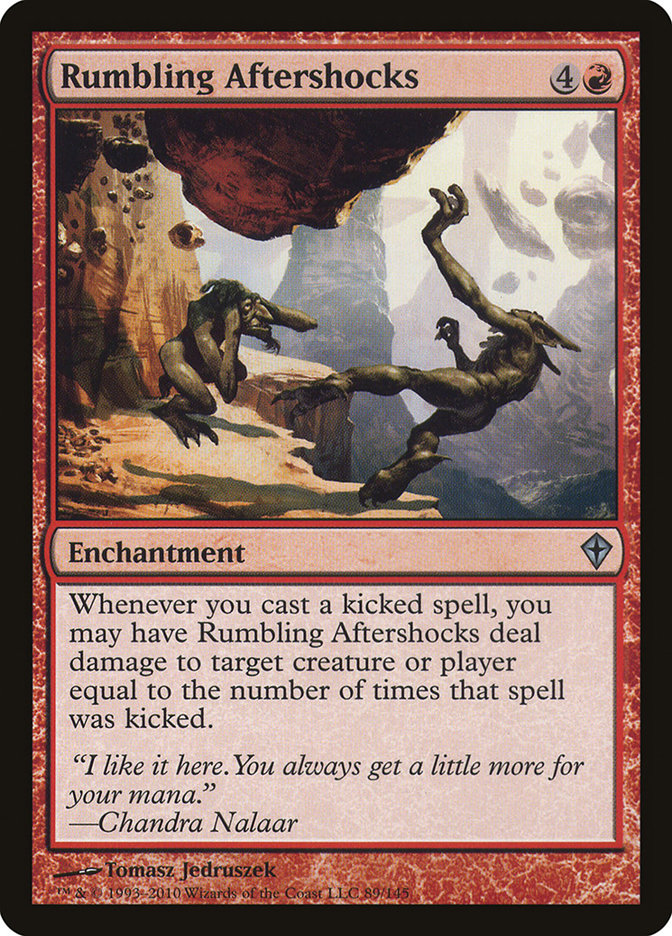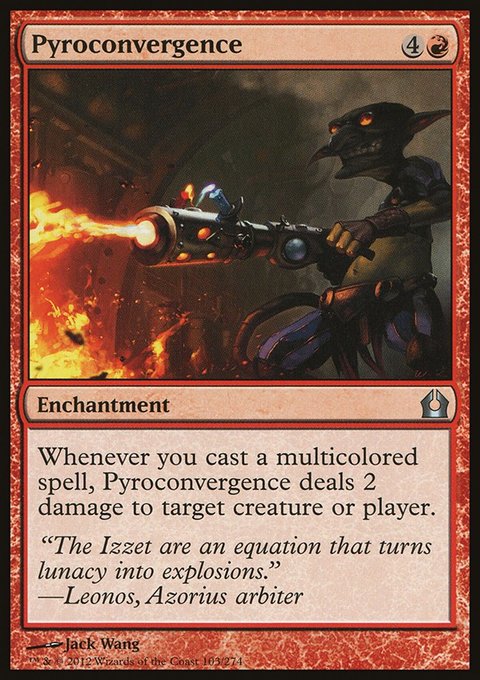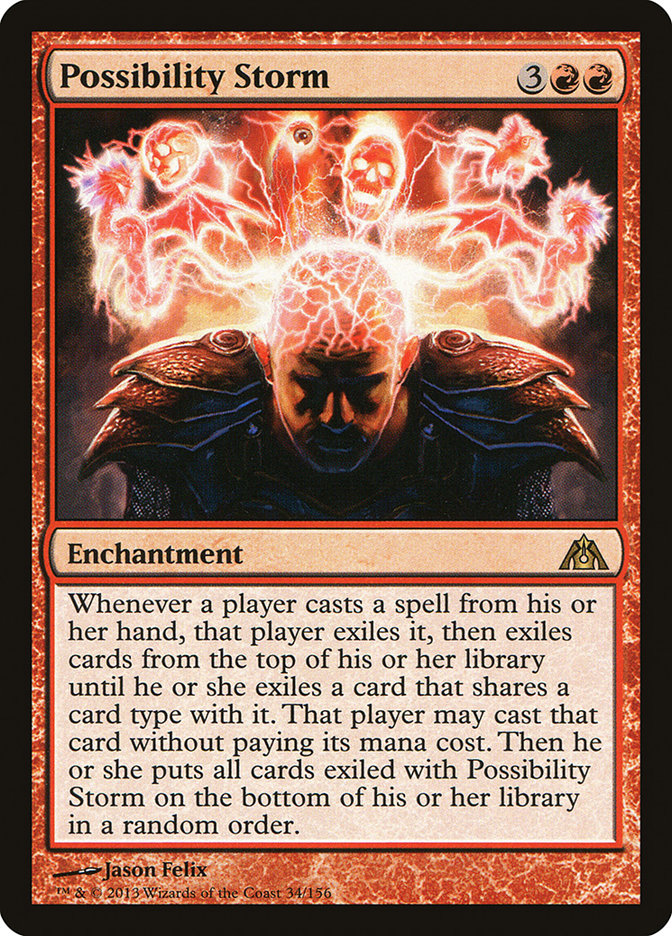Feudo de amargura Carta MTG
| Colecciones da carta | Lanzado en 2 coleccionesVer todos |
| El coste de maná | |
| Costo de maná convertido | 5 |
| Rareza | Extraña |
| Tipo | Encantamiento |
Texto de la carta
En cuanto el Feudo de amargura entre al campo de batalla, elige dos jugadores. Si una fuente que controla uno de los jugadores elegidos fuera a hacer daño al otro jugador elegido o a un permanente que controla ese jugador, en vez de eso, esa fuente hace el doble de ese daño a ese jugador o permanente.
Cartas Similares
Sumergiéndose en el mundo de Magic: The Gathering, Bitter Feud brilla como un encantamiento único que anima el juego al incentivar conflictos entre otros jugadores. Su pariente más cercano en la categoría de encantamientos podría ser Curse of Opulence, que también anima a los jugadores a atacar a un oponente elegido recompensando al atacante con fichas de Oro, un recurso valioso para avanzar en la estrategia.
Otra carta que aviva las llamas del combate es Goblin Diplomats. Aunque no es un encantamiento, esta criatura afecta la política del juego al obligar a cada jugador a participar en ataques durante su turno, similar a la capacidad de Bitter Feud para influir en las decisiones de combate. Rite of the Raging Storm es un encantamiento similar que crea una criatura antes del turno de cada jugador, incentivándolos a atacar a oponentes que no sean tú, reflejando la manipulación indirecta vista en Bitter Feud.
Sin embargo, Bitter Feud es distintivo en su capacidad para duplicar el daño entre los jugadores elegidos, una característica no reflejada en las cartas mencionadas anteriormente. Esto puede llevar a momentos rápidos de cambio de juego, destacando a Bitter Feud en la categoría de cartas de interacción entre jugadores y mejora del combate dentro de Magic: The Gathering.
Cartas similares a Feudo de amargura por color, tipo y coste de maná
Beneficios de la carta
Ventaja de cartas: Bitter Feud básicamente obliga a los jugadores a buscar rápidamente respuestas o fortificaciones en sus mazos, lo que a menudo lleva a una ventaja de cartas indirecta al agotar recursos para abordar las amenazas crecientes.
Aceleración de recursos: Aunque no afecta directamente a los recursos, Bitter Feud aumenta la urgencia del juego, presionando a los oponentes a comprometerse más con el tablero y potencialmente excederse, lo que puede favorecerte al usar menos recursos a largo plazo.
Velocidad instantánea: Aunque la carta en sí no opera a velocidad instantánea, crea un entorno donde las interacciones a velocidad instantánea se vuelven más valiosas. Los oponentes deben tener cuidado con los cambios repentinos en los cálculos de daño de combate, lo que significa que la eliminación a velocidad instantánea o los trucos de combate en respuesta al efecto de duplicación de Bitter Feud pueden cambiar el juego.
Inconvenientes de la carta
Requisito de descarte: En el ámbito de los hechizos rojos donde la ventaja de cartas puede ser crucial, Bitter Feud no afecta directamente el tamaño de tu mano ni ofrece ninguna forma de robo de cartas para mitigar su costo. Jugarlo requiere certeza en tu estrategia, ya que no repone los recursos que consume.
Costo de maná específico: El costo de un maná genérico y cuatro manás rojos de Bitter Feud requiere un compromiso significativo con fuentes de maná rojo. Esta especificidad puede resultar restrictiva al construir un mazo, especialmente en formatos donde la flexibilidad de maná es clave para el éxito de una estrategia.
Costo de maná comparativamente alto: La inversión de cinco manás necesaria para jugar Bitter Feud puede ser considerable considerando el efecto que proporciona. Aunque potencialmente puede duplicar el daño entre oponentes o criaturas elegidas, no afecta inmediatamente el estado del tablero, lo cual es un aspecto crítico al evaluar la eficiencia de cartas de alto coste en MTG.
Razones para incluir en tu colección
Versatilidad: Bitter Feud no es solo otra carta que mezclar en tu mazo. Su capacidad para duplicar el daño que los jugadores reciben de fuentes específicas lo hace adaptable a varias estrategias agresivas y controladoras. Ya sea que estés elevando un juego casual o dando emoción a una partida de comandante, es una carta que puede cambiar significativamente la dinámica del campo de batalla.
Potencial de combo: Para aquellos que disfrutan creando combos intrincados, Bitter Feud puede actuar como un catalizador. Se combina excelente con amplificadores de daño o cartas que infligen daño a múltiples objetivos, aumentando exponencialmente el daño infligido y cambiando repentinamente el rumbo del juego a tu favor.
Meta-Relevancia: En un entorno donde las batallas son largas y el daño se intercambia incrementalmente, Bitter Feud puede ser determinante. Obliga a los oponentes a replantear sus estrategias debido al mayor riesgo que introduce la carta. Cualquier meta donde los totales de vida sean un recurso crucial verá a Bitter Feud como una inclusión formidable.
Cómo vencer
Bitter Feud es un encantamiento convincente en Magic: The Gathering que puede duplicar el daño que los jugadores se infligen entre sí, bajo condiciones específicas. Su habilidad única a menudo resulta en un reloj rápido en los totales de vida del juego. Sin embargo, superar esta carta podría ser crucial para sobrevivir y eventualmente ganar.
Para vencer a Bitter Feud, considera usar cartas que te ofrezcan protección contra hechizos, como Leyline of Sanctity, evitando que seas objetivo, anulando su efecto. Alternativamente, utiliza cartas que neutralicen encantamientos directamente, como Disenchant. Estas pueden eliminar discretamente a Bitter Feud antes de que cause estragos. Las cartas con habilidades de ganancia de vida también son efectivas, ya que ayudan a compensar el aumento de daño y mantener estable tu total de vida.
Además, tener una mezcla versátil de eliminación a velocidad instantánea y contrahechizos en tu arsenal puede ser fundamental. Esta estrategia reactiva te permite abordar las amenazas en el momento y mantener el control sobre el estado del juego. Al combinar protección, eliminación dirigida y hechizos de sostenimiento de vida, puedes amortiguar efectivamente el impacto de Bitter Feud y allanar tu camino hacia la victoria en los acalorados duelos de Magic: The Gathering.
Donde comprar
Si estás buscando comprar una carta MTG Feudo de amargura de un coleccione específico como Commander 2014 and Commander Anthology Volume II, existen varias opciones confiables que debes considerar. Una de las fuentes principales es tu tienda de juegos local, donde a menudo puedes encontrar paquetes de refuerzo, cartas individuales y mazos preconstruidos de colecciones actuales y pasadas. A menudo ofrecen el beneficio adicional de una comunidad donde puedes intercambiar con otros jugadores.
Para un inventario más amplio, particularmente de colecciones más antiguos, mercados en línea como TCGPlayer, Card Kingdom y Card Market ofrecen amplias selecciones y te permiten buscar cartas de colecciones específicos. Las plataformas de comercio electrónico más grandes como eBay y Amazon también tienen listados de varios vendedores, lo que puede ser un buen lugar para buscar productos sellados y hallazgos raros.
Además, el sitio oficial de Magic suele tener un localizador de tiendas y listas de minoristas para encontrar Wizards of the Productos con licencia costera. Recuerde comprobar la autenticidad y el estado de las cartas al comprarlas, especialmente a vendedores individuales en mercados más grandes.
A continuación se muestra una lista de algunos sitios web de tiendas donde puede comprar las Feudo de amargura y otras cartas MTG:
 COMPRAR
COMPRAR BurnMana es un socio oficial de TCGPlayer
- eBay
- Card Kingdom
- Card Market
- Star City Games
- CoolStuffInc
- MTG Mint Card
- Hareruya
- Troll and Toad
- ABU Games
- Card Hoarder Magic Online
- MTGO Traders Magic Online
Ver productos MTG
Impresiones
La carta Feudo de amargura Magic the Gathering se lanzó en 2 colecciones diferentes entre 2014-11-07 y 2018-06-08. Ilustrado por Aaron Miller.
| # | Liberado | Nombre | Código | Símbolo | Número | Marco | Disposición | Borde | Artista |
|---|---|---|---|---|---|---|---|---|---|
| 1 | 2014-11-07 | Commander 2014 | C14 | 32 | 2015 | Normal | Negra | Aaron Miller | |
| 2 | 2018-06-08 | Commander Anthology Volume II | CM2 | 84 | 2015 | Normal | Negra | Aaron Miller |
Legalidades
Formatos de Magic the Gathering donde Feudo de amargura tiene restricciones
| Formato | Legalidad |
|---|---|
| Commander | Legal |
| Legacy | Legal |
| Oathbreaker | Legal |
| Vintage | Legal |
| Duel | Legal |
Reglas e información
La guía de referencia para las reglas de las cartas Feudo de amargura de Magic: The Gathering proporciona las reglas oficiales, las erratas emitidas, así como un registro de todas las modificaciones funcionales que se han producido.
| Fecha | Texto |
|---|---|
| 07/11/2014 | La Rivalidad Amarga se aplica al daño infligido por cualquier fuente controlada por uno de los jugadores elegidos, no solo al daño de combate. |
| 07/11/2014 | Si varios efectos modifican cómo se inflige el daño, el jugador que recibe el daño, o el controlador del permanente que recibe el daño, elige el orden en el que aplicar los efectos. Por ejemplo, la habilidad de Decorated Griffin dice ": Previene el próximo daño de combate que se te infligiría en este turno." Supongamos que controlas un Decorated Griffin, y tú y un oponente son los jugadores elegidos para una Bitter Feud. Si una criatura que controla ese jugador infligiría 3 daños de combate a ti, y la habilidad de Decorated Griffin ha resuelto una vez, puedes elegir entre (a) aplicar primero el efecto de Decorated Griffin y prevenir 1 daño, y luego permitir que el efecto de Bitter Feud duplique los 2 daños restantes, para un total de 4 daños infligidos a ti, o (b) dejar que el efecto de Bitter Feud se aplique primero y duplique el daño a 6, y luego aplicar el efecto de Decorated Griffin para prevenir 1 daño, para un total de 5 daños infligidos a ti. |
| 07/11/2014 | Si hay dos Feudos Amargos en el campo de batalla, y los mismos dos jugadores fueron elegidos para cada uno, el daño infligido se duplicará para cada uno. Por lo tanto, dos Feudos Amargos terminarán multiplicando el daño por cuatro, tres multiplicarán el daño por ocho y cuatro por dieciséis. |
| 07/11/2014 | La fuente del daño no cambia. Un hechizo que inflige daño especificará la fuente del daño. Normalmente esta es el propio hechizo. Una habilidad que inflige daño especificará la fuente del daño, aunque nunca será la habilidad en sí misma. Generalmente, la fuente de la habilidad también es la fuente del daño. |


